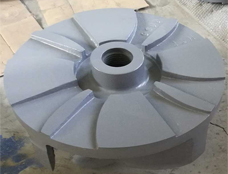+86 311 85258258
+86 311 85258258
Nov. 18, 2020
Metal casting manufacturers will share defects of metal casting, including their cause analysis and prevention methods with you.
The pores are holes that exist on the surface or inside of the casting, which is round, oval, or irregular. Sometimes multiple pores form a pore cluster, and the subcutaneous pores are generally pear-shaped. The choking holes are irregular in shape and rough on the surface. The air pockets are concave on the surface and the surface is relatively smooth, which can be found by the appearance inspection of the open holes. Subcutaneous stomata can only be found after machining. The surface of the relatively shallow subcutaneous pores of light alloy castings is dark gray after sand blowing, and sometimes the tip of the pear-shaped pores is exposed on the surface of the casting, which can be seen on visual inspection. The important castings are inspected by X-ray for pores, and the pores appear black on the X-ray film. Stomas can also be found in fracture and low-power inspection.

Due to the effect of the alloy and the gas forming the pores, the surface of the pores have different colors.
The preheating temperature of the metal mold is too low, and the liquid metal cools too fast when passing through the pouring system.
The metal exhaust design is poor, and the gas cannot be discharged smoothly.
The paint is not good, the paint itself has a poor exhaust, and even decomposes gas.
There are shrinkage holes and pits on the surface of metal molds and external cooling iron. After the liquid metal is injected, the gas at the shrinkage holes and pits rapidly expand and presses into the alloy liquid to form pores or choking holes.
The metal surface is corroded and not cleaned up.
Metal molds and metal cores should be baked thoroughly after spraying and repainting; do not use too fine paint; absolutely do not polish after paint; respray immediately after paint falls off; when there are choking holes on the paint surface, remove Re-spray after scraping off the paint.
Use inclined pouring. Some defect prevention methods are achieved by directly eliminating the cause of the defect formation; for example, if the cause of the defect formation is "the preheating temperature of the metal type is too low", the prevention method is to "increase the preheating temperature of the metal type".
Shrinkage holes are bright or dark holes with rough surfaces in castings. When the shrinkage cavity is slight, there are many scattered small shrinkage holes, that is, shrinkage porosity. The shrinkage cavity or shrinkage porosity place has coarse grains, and the fracture surface shows different colors after heat treatment.
The shrinkage porosity of light alloy castings is cloudy and severely filamentous on the X-ray film, and the surface is loose and densely dotted in the fluorescence. Shrinkage and porosity often occur in the vicinity of the gate, the root of the riser, the thick part, the wall thickness transition, and the thin wall with a large plane.
The working temperature of the metal mold does not meet the requirements of sequential solidification.
Poor choice of paint and poor control of paint layer thickness.
Improper design of the position of the casting in the metal mold.
Increase the metalworking temperature.
Adjust the thickness of the paint; spray the paint evenly; when the paint is dropped and repainted, local accumulation should not be formed.
Local heating of metal, or asbestos insulation.
The inlaid steel block in the hot section is returned and cooled.
The metal mold is equipped with radiating fins and water to return to the local cooling rate, or spray water or spray outside the mold.
Use detachable chill blocks to be installed in metal molds alternately.
A compressed air pressure device is installed on the metal riser.
The slag hole is an open hole or a dark hole on the metal casting, all or part of the hole is blocked by slag, and the shape is irregular. It is not easy to find slag inclusions in the flux. The internal flux slag is generally white round or snowflake flakes, or small dots on the X-ray film; dark gray on the fracture; after the slag is removed, smooth holes appear, generally distributed in the lower part of the pouring position, Near the gate or at the dead corner of cast iron. Oxidation inclusions are mostly distributed on the surface of the casting near the inner gate in a net shape, sometimes in the form of flakes, irregular clouds with wrinkles; or forming a flaky interlayer in the mold; or stored in the inside of the casting in the form of clusters, interrupted When the mouth is broken, it often breaks from the interlayer, and the oxide skin is sandwiched in it, which is one of the root causes of cracks. The fracture has different colors. The oxidized slag on the X-ray film is black lumps or irregular clusters.
Slag holes are mainly caused by metallurgy, operation, and pouring system problems. From the perspective of metal type, it will not cause slag holes, and it is an effective way to avoid the formation of slag holes.
Set a filter screen in the pouring system.
Use inclined pouring.
If you are interested in our products, please feel free to contact us.